Explore highly sensitive draft pressure sensors for measuring low-range vacuum or pressure in ducts, flues & HVAC systems. Differential, gauge & bi-directional models available.
Draft pressure sensors are precision instruments designed specifically for measuring very low positive pressures, vacuum, or differential pressures commonly encountered in air handling systems, ventilation shafts, and combustion flues. Essential for applications ranging from HVAC efficiency monitoring and filter status indication to controlling building pressurization and ensuring safe operation of fume hoods or exhaust stacks, these sensors provide accurate measurements typically expressed in inches of water column (inWC), millibars (mbar), or Pascals (Pa). Offering gauge, differential, and bi-directional configurations, they provide critical data for optimizing performance, ensuring safety, and enabling effective control in numerous industrial, commercial, and research environments.
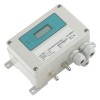 DPS Low Differential Pressure Transmitter - Ultra low differential pressure transmitter for HVAC applications with 4-20mA current loop or amplified voltage output signal in pressure ranges from 0.1 mb up to 1 bar differential.
DPS Low Differential Pressure Transmitter - Ultra low differential pressure transmitter for HVAC applications with 4-20mA current loop or amplified voltage output signal in pressure ranges from 0.1 mb up to 1 bar differential. 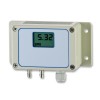 DPS200 HVAC Differential Pressure Transmitter - Differential air pressure sensor with a 10 volt or a 4-20mA output for building ventilation applications. Ranges from 0 to 6 mbar up to 0 to 1000 mbar.
DPS200 HVAC Differential Pressure Transmitter - Differential air pressure sensor with a 10 volt or a 4-20mA output for building ventilation applications. Ranges from 0 to 6 mbar up to 0 to 1000 mbar. DPS300 User Switchable Pressure Range, Volts or Current Output Low DP Sensor - The DPS 300 is a low range HVAC differential pressure sensor. The lowest possible pressure range is 0...100 pascals. 2 or 3 switchable pressure ranges, plus volts or current output are included with most standard configurations.
DPS300 User Switchable Pressure Range, Volts or Current Output Low DP Sensor - The DPS 300 is a low range HVAC differential pressure sensor. The lowest possible pressure range is 0...100 pascals. 2 or 3 switchable pressure ranges, plus volts or current output are included with most standard configurations.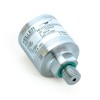 41X Low Range Digital Output Pressure Sensor - Low pressure sensor with a USB, RS232 or RS485 digital output interface for measuring low range gauge or differential pressures from 10 to 300 mbar.
41X Low Range Digital Output Pressure Sensor - Low pressure sensor with a USB, RS232 or RS485 digital output interface for measuring low range gauge or differential pressures from 10 to 300 mbar. 41X High Precision Low Range Pressure Transmitter - High precision pressure transmitter for measuring very low vented gauge reference or differential air pressures. Rangeable 4-20mA or 0-10 volt output.
41X High Precision Low Range Pressure Transmitter - High precision pressure transmitter for measuring very low vented gauge reference or differential air pressures. Rangeable 4-20mA or 0-10 volt output.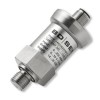 DMP343 Low Range Pneumatic Pressure Sensor - DMP343 pneumatic pressure sensor for measuring very low range pressures on pneumatic control systems, heating, ventilation and air conditioning systems (HVAC) .
DMP343 Low Range Pneumatic Pressure Sensor - DMP343 pneumatic pressure sensor for measuring very low range pressures on pneumatic control systems, heating, ventilation and air conditioning systems (HVAC) .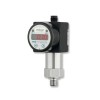 DS210 Combined Low Pressure Switch, Indicator and Sensor - Low range three in one pressure switch, pressure indicator and pressure sensor for use on pneumatics and HVAC applications.
DS210 Combined Low Pressure Switch, Indicator and Sensor - Low range three in one pressure switch, pressure indicator and pressure sensor for use on pneumatics and HVAC applications.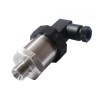 IMPLR Low Range All Stainless Steel OEM Pressure Sensor - Low cost sensor for measuring small pressure ranges from 0-50 mbar (10 inH2O) to 0-1000 mbar (15 psi) of liquids or gases.
IMPLR Low Range All Stainless Steel OEM Pressure Sensor - Low cost sensor for measuring small pressure ranges from 0-50 mbar (10 inH2O) to 0-1000 mbar (15 psi) of liquids or gases.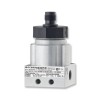 DMD341 Compact Differential Air Pressure Sensor - Small size dp sensor for measuring differential air pressure on HVAC, compress air and pneumatic control systems.
DMD341 Compact Differential Air Pressure Sensor - Small size dp sensor for measuring differential air pressure on HVAC, compress air and pneumatic control systems.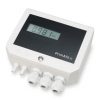 PrimAtü 10 Low Cost Low Range Differential Air Pressure Transducer - The PrimAtü 10 low cost low range differential air pressure transducer can detect and display both positive and negative differential pressure variations of very low low pressure ranges from 0.5 up to 1000 mbar/hPa, and output the pressure as a 4-20mA, 0-20mA or a 0-10Vdc analog output.
PrimAtü 10 Low Cost Low Range Differential Air Pressure Transducer - The PrimAtü 10 low cost low range differential air pressure transducer can detect and display both positive and negative differential pressure variations of very low low pressure ranges from 0.5 up to 1000 mbar/hPa, and output the pressure as a 4-20mA, 0-20mA or a 0-10Vdc analog output.
- 100 Pa bi-directional range differential air pressure transmitter
- Air classification system powder duct pressure transmitter with +/-15 kPa range and ATEX/IECEx IS cert
- 10Pa diff range 0-20mA output air pressure sensor for automotive component testing
- Low-range air pressure monitoring in raised floor plenums using a wireless SNMP gateway
- Monitoring hot and cold aisle containment in datacenters using a differential pressure transmitter
- Measuring negative pressure in hospital construction zones with a low range differential pressure transducer
- Monitoring AHU cooling coil efficiency with a DP transmitter
- Airflow and chamber pressure measurement for a portable modbus data acquisition trolley
- 20 Pa DP range 0-10V output air pressure sensor for building management use
Find out more about Draft Pressure Sensors to determine which product options and capabilities will best meet your application requirements.
Draft pressure sensors are specialized instruments engineered for the precise measurement of very low positive or negative pressures, often referred to as suction or vacuum, relative to the ambient atmospheric pressure or a differential between two points. These sensors are critical components in applications where subtle air pressure variations must be monitored or controlled, commonly found within air handling units (AHUs), ventilation ductwork, exhaust flues, and combustion stacks.
The term ‘draft’ specifically relates to the slight pressure difference that drives air or gas movement, typically within containment structures like ducts or chimneys. Accurately measuring this draft is essential for optimizing the efficiency of HVAC systems, ensuring proper combustion in boilers and furnaces by controlling airflow, maintaining negative pressure in laboratory fume hoods for safety, or verifying the correct positive pressurization of cleanrooms to prevent contaminant ingress.
Measurement ranges for draft pressures are typically very low, often specified in units like inches of water column (inWC), millibars (mbar), or Pascals (Pa), reflecting the small forces involved. Sensors designed for these applications must possess high sensitivity and stability at the low end of their measurement scale, employing technologies capable of resolving minute pressure changes reliably over time.
Differential pressure draft sensors feature two process connections or ports. These are used to measure the pressure difference between two distinct locations, such as upstream and downstream of an air filter to monitor blockage, across an orifice plate or pitot tube assembly for calculating airflow rate within a duct, or between a conditioned space and a reference area to manage building pressurization and control stack effect in tall structures.
Alternatively, gauge pressure draft sensors measure the pressure relative to the surrounding atmospheric pressure using a single process connection. These can be configured to measure positive gauge pressure (above atmospheric) or, more commonly in draft applications, negative gauge pressure (vacuum or suction below atmospheric). Typical uses include monitoring the negative pressure within a boiler flue to ensure proper exhaust venting or measuring the suction generated by an extraction fan in an industrial ventilation system.
For applications involving variable air volume (VAV) systems or environments where airflow direction can reverse or fluctuate around zero, bi-directional draft pressure sensors are necessary. These sensors are calibrated with a compound range, such as −50 to +50 Pa or −0.5 to +0.5 inWC, allowing them to accurately represent both positive pressure and vacuum conditions with a single device. The output signal typically indicates the direction and magnitude, for instance, a 4-20mA signal where 12mA represents zero pressure.
Selecting and installing draft pressure sensors requires attention to factors like mounting orientation, as some very low-range sensors can be sensitive to gravitational effects. Protecting the sensing element from particulate matter within ductwork or potential condensation in flue gas applications is also crucial for long-term accuracy and reliability. Integration into control systems like BMS, PLCs, or SCADA is usually straightforward via standard analogue outputs like 4-20mA, 0-5Vdc, or 0-10Vdc.
